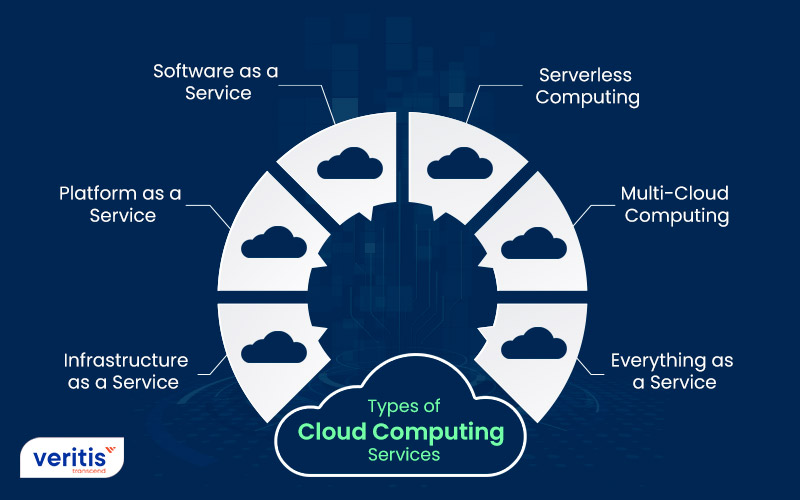Boost Your Online Presence with LinkDaddy Cloud Services: Effective Strategies for Cloud Services Press Release
Boost Your Online Presence with LinkDaddy Cloud Services: Effective Strategies for Cloud Services Press Release
Blog Article
Simplify Your Framework With Cloud Solutions
As organizations navigate the ever-evolving landscape of innovation and information administration, the duty of cloud services in simplifying facilities has actually become significantly famous. Just how can services properly browse this shift and really unlock the possibility of cloud services for simplifying their facilities?
Advantages of Cloud Provider
Cloud services provide a structured technique to managing IT framework, offering businesses with scalability, adaptability, and cost-efficiency. One of the essential advantages of cloud services is the scalability they offer.
Additionally, cloud services get rid of the requirement for organizations to buy expensive software and hardware. This cost-efficiency is a considerable advantage, especially for little to medium-sized enterprises looking to minimize upfront costs. By utilizing cloud services, companies can access top quality IT resources without the large cost related to standard facilities arrangements.
Moreover, cloud solutions supply businesses with the versatility to access their data and applications from anywhere with a web link. This level of availability boosts collaboration among teams, allows remote job, and enhances general performance. The flexibility provided by cloud solutions encourages companies to adapt swiftly to transforming market conditions and consumer demands.
Expense Cost Savings and Scalability
Along with the operational benefits highlighted earlier, the combination of cloud services into a firm's framework comes up with substantial cost savings and enhanced scalability. Cloud solutions use a pay-as-you-go version, allowing companies to range sources up or down based on present demands, thereby avoiding the costs associated with maintaining excess capacity. This adaptability enables firms to adjust promptly to fluctuating needs without incurring unnecessary expenses.
Furthermore, cloud services eliminate the need for upfront investments in hardware and software application, minimizing resources expenses. Operating expenditures are additionally lessened as business no more require to handle and preserve physical web servers, resulting in lower energy consumption and IT staffing prices. Additionally, cloud services give automated updates and maintenance, ensuring that the facilities remains protected and updated without requiring hand-operated treatments.
Boosted Safety And Security Actions
When incorporating cloud solutions into a firm's infrastructure to secure sensitive data and make certain conformity with sector guidelines,Executing rigorous safety steps is extremely important. Cloud provider use enhanced safety attributes such as data file encryption, firewall program security, and multi-factor verification to reduce cybersecurity risks. File encryption aids safeguard information both at remainder and in transit, making sure that only licensed individuals can access sensitive info. Firewall softwares work as a barrier in between inner networks and external threats, surveillance and controlling incoming and outward bound network traffic. Multi-factor authentication adds an extra layer of safety by calling for individuals to provide several kinds of confirmation before accessing the cloud services.
Furthermore, normal safety and security audits and conformity evaluations help determine vulnerabilities and make sure adherence to industry standards. Companies can also take advantage of functions like automated security updates and real-time threat surveillance given by cloud solution suppliers. By focusing on safety and security measures and staying positive in resolving possible threats, companies can confidently utilize cloud solutions while shielding their valuable information from unapproved gain access to or breaches.
Transitioning to Cloud Infrastructure
To effectively integrate cloud solutions into a company's facilities, a structured strategy that resolves the change towards cloud-based remedies is critical. Transitioning to shadow infrastructure entails careful planning and execution to guarantee a smooth migration process. The very first action is to evaluate the existing framework and identify which applications and systems are suitable for movement to the cloud. This analysis should take into consideration elements such as information sensitivity, compliance demands, and performance requirements.
When the analysis is full, a movement approach need to be developed. more tips here This strategy must describe the timeline, resources, and obligations for moving each part to the cloud. It is important to connect this strategy plainly to all stakeholders to guarantee placement and reduce disruptions during the shift.
Throughout the migration testing, monitoring and process are vital to determine and attend to any type of concerns quickly. Routine checkpoints must be developed to track progression over at this website and make necessary changes. Furthermore, training for employees on making use of cloud services need to be supplied to guarantee a successful shift and make the most of the advantages of the brand-new infrastructure.
Ideal Practices for Cloud Fostering
Effective adoption of cloud solutions depends upon the strategic placement of business purposes with technical capabilities and business preparedness. To ensure a smooth shift to the cloud, organizations need to begin by performing a thorough analysis of their existing framework and recognizing which workloads are best matched for cloud migration. It is essential to entail essential stakeholders from various departments in the decision-making procedure to gain buy-in and attend to any issues at an early stage.
One more finest practice for cloud fostering is to prioritize safety and conformity. Organizations should very carefully evaluate the safety and security procedures offered by cloud provider and ensure that their information is safeguarded according to sector standards and regulatory demands. Applying durable information security, access controls, and regular safety and security audits can assist alleviate threats associated with cloud fostering.

Verdict

As services navigate the ever-evolving landscape of innovation and data management, the role of cloud solutions in streamlining facilities has actually come to be progressively popular - linkdaddy cloud services press release. How can organizations effectively navigate this change and truly unlock the possibility of cloud services for simplifying their framework?
Cloud services use a streamlined approach to managing IT framework, supplying businesses with scalability, cost-efficiency, and flexibility. By utilizing cloud solutions, businesses can access top notch IT sources without the substantial rate tag linked with traditional infrastructure setups.
To ensure a smooth shift to the cloud, organizations should begin by performing a thorough analysis check out here of their present facilities and determining which workloads are best suited for cloud movement.
Report this page